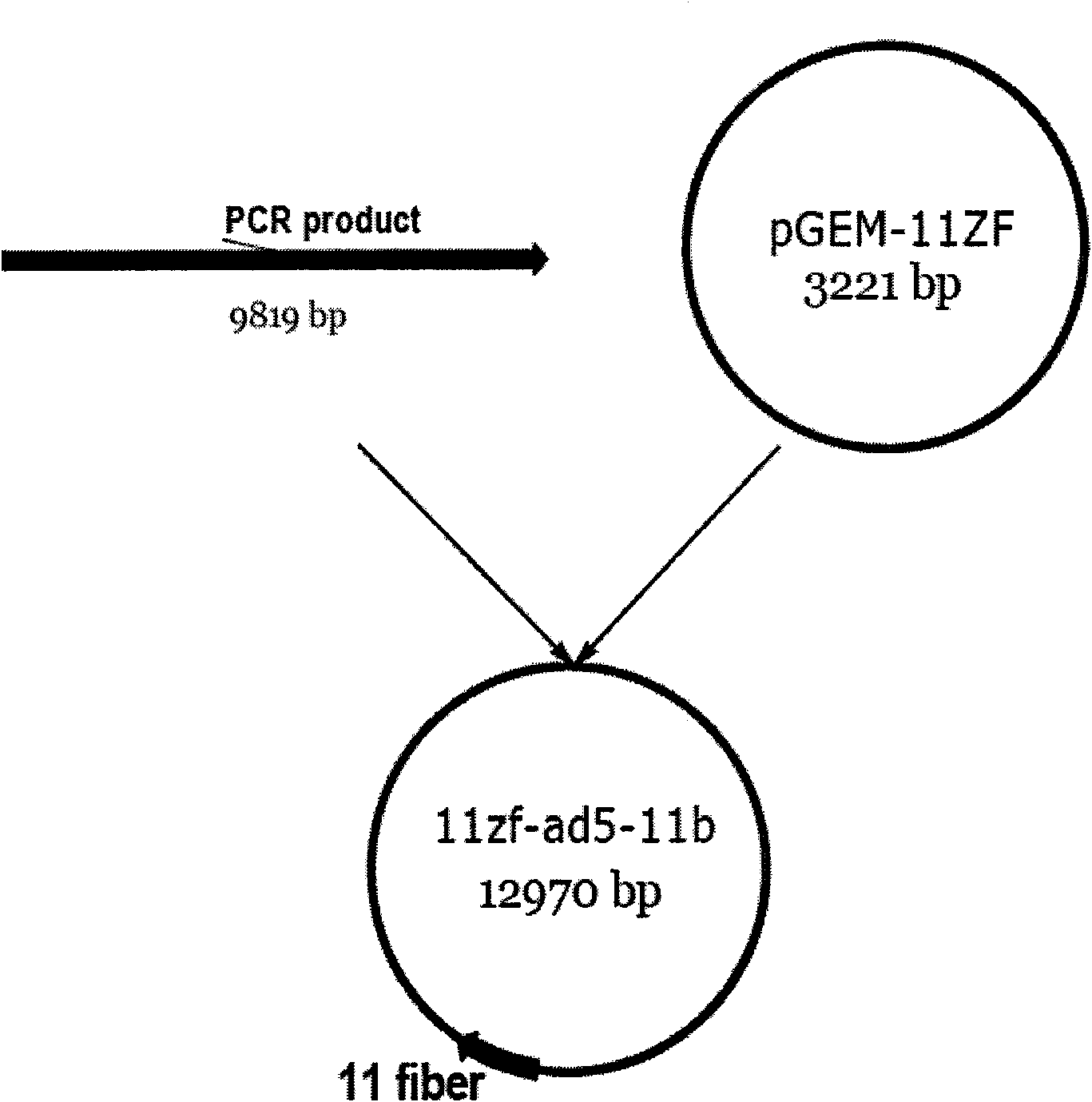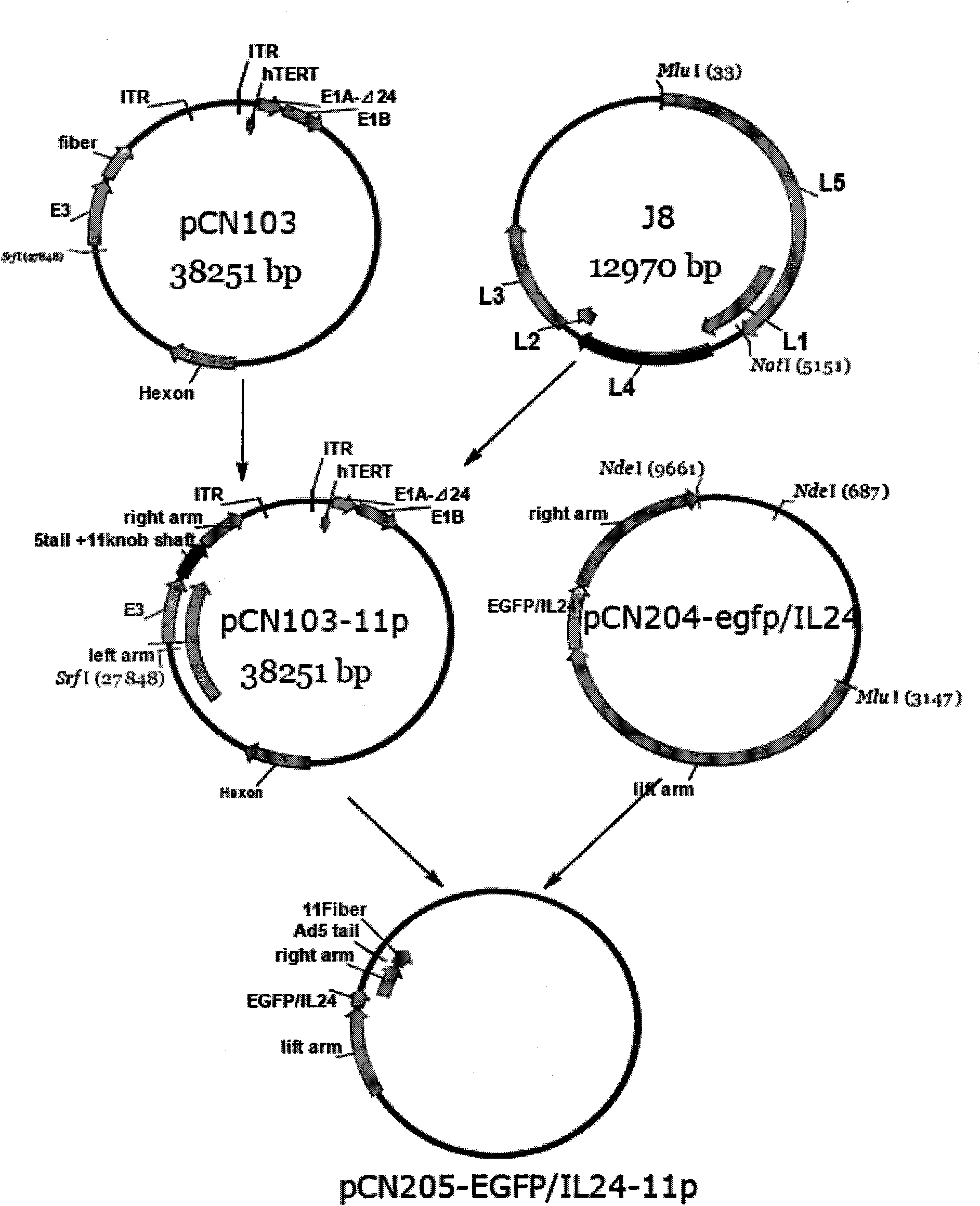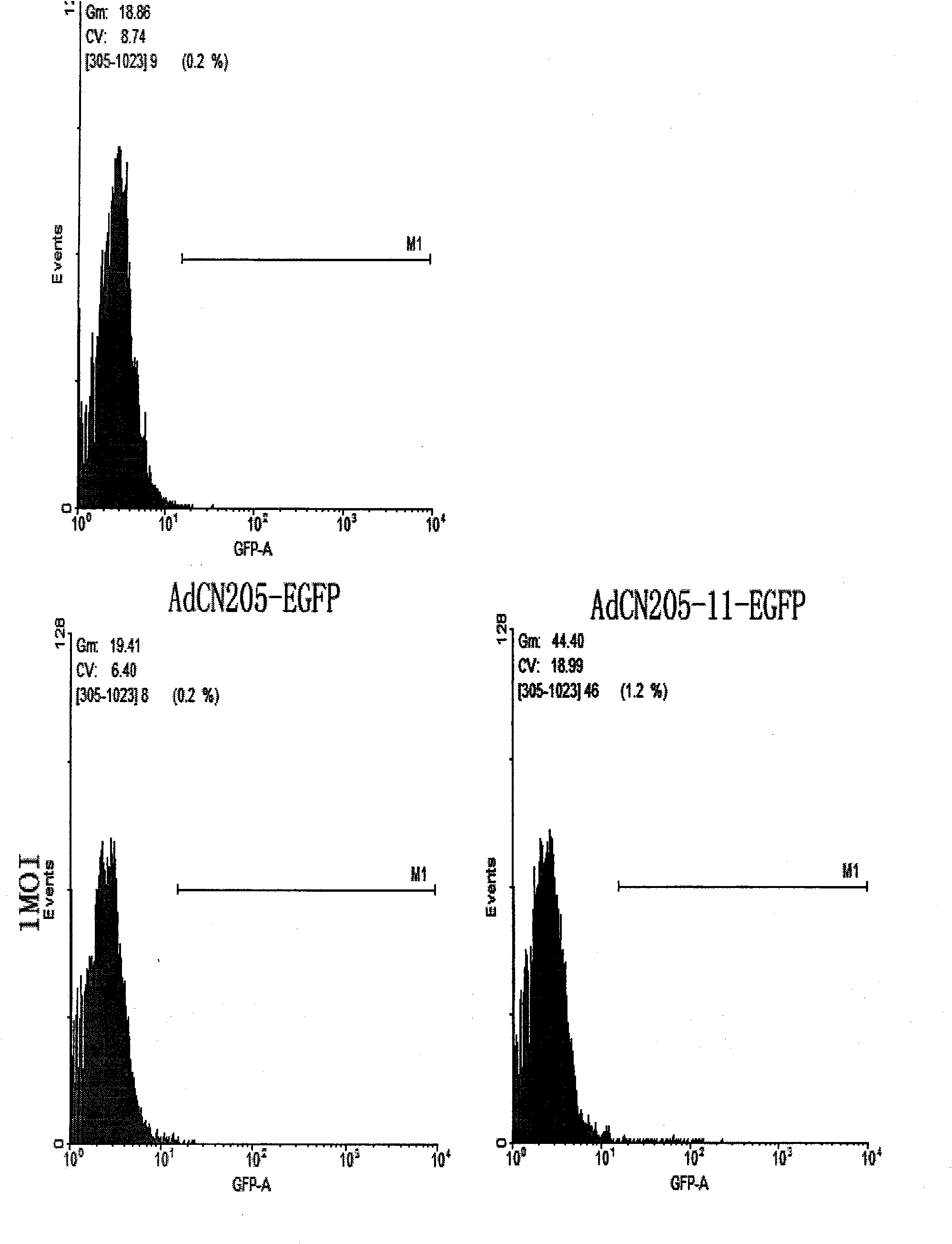Construction method of three-target mosaic type oncolytic adenovirus Ad5/F11 carrier and use thereof
An oncolytic adenovirus, construction method technology, applied in the construction of three-targeted chimeric oncolytic adenovirus Ad5/F11 vector and its application field, can solve the problems of limited application, lack of CAR, low infection efficiency, etc. Enhanced safety, ensures specific replication, and enhances the effect of lethality
- Summary
- Abstract
- Description
- Claims
- Application Information
AI Technical Summary
Problems solved by technology
Method used
Image
Examples
Embodiment 1
[0039] Example 1: Construction of tumor-targeted chimeric oncolytic adenoviral vector pCN205-IL-24-11p carrying foreign genes and acquisition of virus AdCN205-11-IL-24
[0040] 1. Construction of the shuttle plasmid p11zf-ad5-ad11p:
[0041] 1. SacI, EcoR I double-digested the 3602 plasmid, recovered a 1706bp band, and named it L1; SacI, EcoR I double-digested the pGEM-11ZF(+) plasmid, and named it J1.
[0042] 2. Connect L1 and J1 to obtain a 4925bp plasmid, named J2.
[0043] 3. PCR 3602 plasmid (32788-33105), named L2. The primers are Primer L2up: 5>aactcccccttaaggcatgcactagggcccagaatcgtttgtgt<3.
[0044] 4. Double digestion of J2 plasmid with Apa I and Sph I to obtain J3; double digestion of L2 fragment with Apa I and Sph I to obtain L2-1.
[0045] 5. Ligate J3 and L2-1 to obtain plasmid J4 (5233bp).
[0046] 6. Hind III, Af1 II double digested 3602, and recovered 1826bp fragment L3; Hind III, Af1 II double digested J4 to obtain J5, and ligated with L3 to obtain J6.
...
Embodiment 2
[0067] Example 2: Virus infection efficiency experiments on CD46+ tumor cells and normal blood cells
[0068] According to the cell growth rate determined in the preliminary test, myeloid leukemia cell lines K562 and Kasumi-1 in the logarithmic growth phase, T-lineage leukemia cell line 6T-CEM and peripheral blood lymphocytes (normal cells) PBMC were mixed at a rate of 5×105 / The wells were implanted into 6-well culture plates, and cultured in a 5% CO2 incubator at 37°C for 6 hours. The above cells were divided into two groups, infected with non-replicating adenoviruses Ad5-EGFP, Ad11-EGFP and replicating adenoviruses AdCN205-EGFP, AdCN205-11-EGFP respectively, and cultured in a 5% CO2 incubator at 37°C for 24 hours. The above cells were collected, washed twice with PBS containing 2% FBS, resuspended in 500 μl of PBS containing 2% FBS, and the positive rate of EGFP was detected by flow cytometry. The above experiments were respectively infected with viruses at three concentra...
Embodiment 3
[0070] Example 3: Detection of the killing ability of virus AdCN205-11-IL-24 to normal cells and tumor cells in vitro
[0071]Myeloid leukemia cell lines K562 and Kasumi-1 in the logarithmic growth phase, cervical cancer cell line Hela, lung cancer cell line H460 and colon cancer cell line Sw620 were inoculated into 96-well plates at the amount of 1×104 / well; The T-lineage leukemia cell line 6T-CEM and peripheral blood lymphocytes (normal cells) PBMC in the growth phase were inoculated into 96-well plates at an amount of 2×104 / well, and after 24 hours of culture, 10 MOI of virus was added to each well, and cells without virus were added. As a control, the samples without virus and cells were used as zero-adjustment wells, and 6 replicate wells were made for each. Continue culturing in a 5% CO2 incubator at 37°C. After 24, 48, 72, 96, and 120 hours of virus-infected cells, 20 μl of MTT solution (5 mg / ml) was added to each well, and after culturing at 37°C for 4 hours, triple s...
PUM
 Login to View More
Login to View More Abstract
Description
Claims
Application Information
 Login to View More
Login to View More - R&D
- Intellectual Property
- Life Sciences
- Materials
- Tech Scout
- Unparalleled Data Quality
- Higher Quality Content
- 60% Fewer Hallucinations
Browse by: Latest US Patents, China's latest patents, Technical Efficacy Thesaurus, Application Domain, Technology Topic, Popular Technical Reports.
© 2025 PatSnap. All rights reserved.Legal|Privacy policy|Modern Slavery Act Transparency Statement|Sitemap|About US| Contact US: help@patsnap.com



